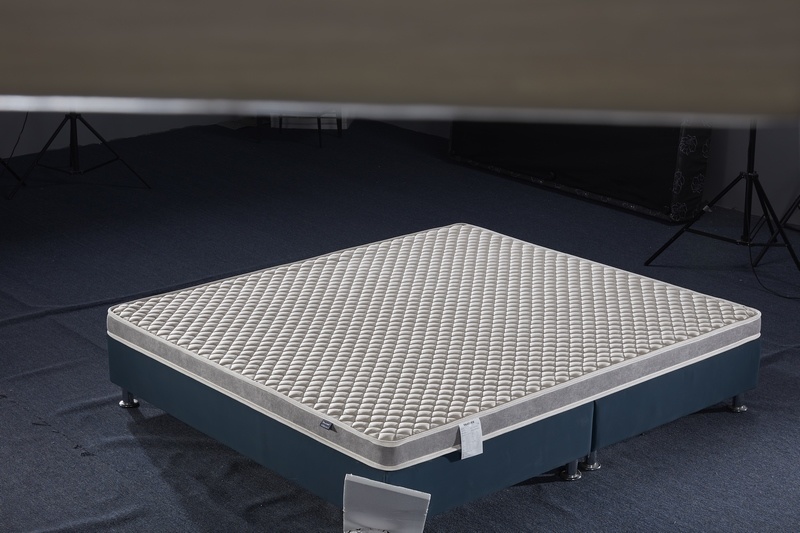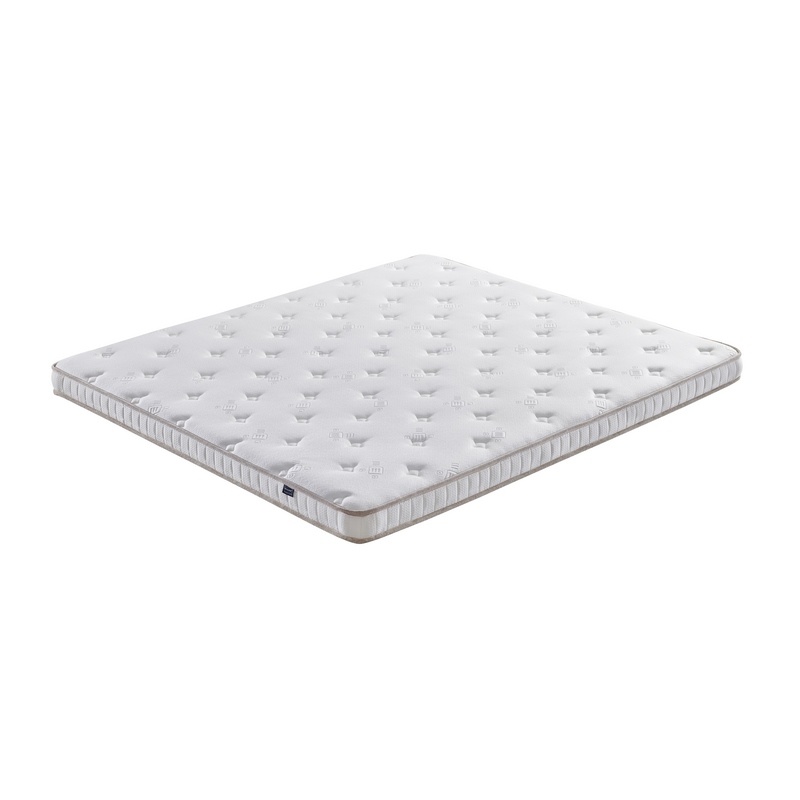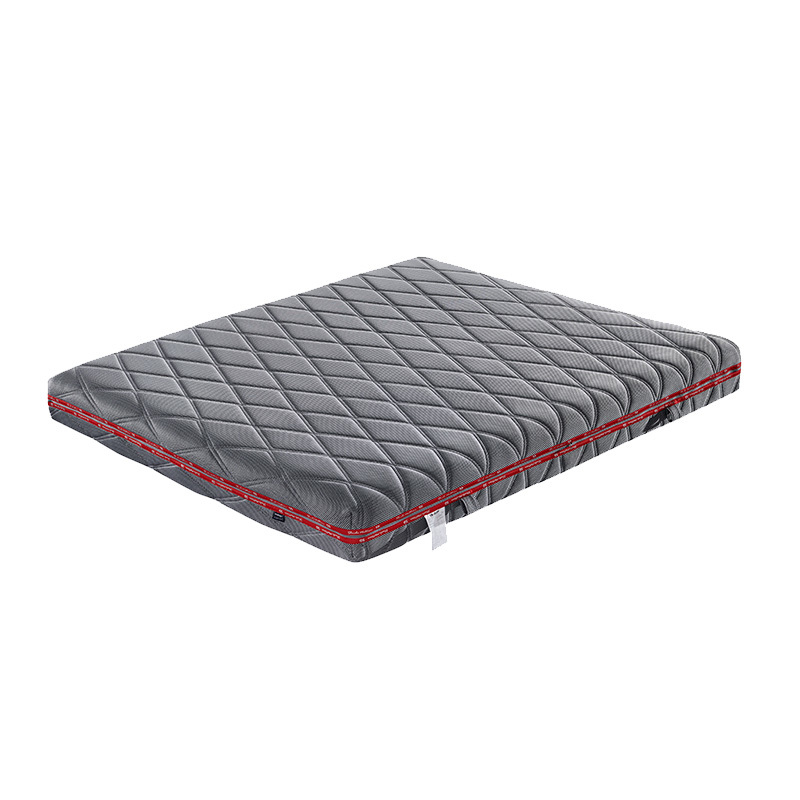What should I pay attention to when buying a palm mattress?
The results of a national supervisory inspection of coir mattress products released this week by the State Administration
Release Time
2025-04-16
The results of a national supervisory inspection of coir mattress products released this week by the State Administration for Market Regulation show that among the 95 batches of coir mattresses inspected in 18 provinces and cities, 27 batches failed to meet the standards, with a failure rate of 28.4%, an increase of 7.3 percentage points compared to 2020. The vast majority of the 27 batches of substandard products failed to meet durability requirements.
Reporters learned that this national supervisory inspection of coir mattress products tested five items: fabric abrasion resistance, durability requirements, safety and hygiene requirements, core material physical properties, and flame retardancy requirements. Two items showed quality failures.
Miao Yuchen, director of the Quality Supervision Department of the State Administration for Market Regulation: The main problems found were concentrated in durability requirements. Among the substandard products, 27 batches failed to meet durability requirements, and another batch failed to meet safety and hygiene requirements.
Liu Xue, a testing engineer at the National Furniture Product Quality Inspection and Testing Center (Guangdong): The durability index mainly checks whether the fabric and core material are damaged after the durability test. Another parameter is that after the durability test, the height of the mattress surface is no less than 90% of the initial height.
National standards stipulate that after 30,000 rolling tests, the coir mattress must not only have intact fabric and no core material tears, but also the height of the mattress surface must not change significantly compared to before the test.
Reporters learned that the sample with the most severe depression, where the mattress surface height decreased by nearly 40% after the durability test, was a Yu Xi brand coir mattress, claimed to be produced by Taiyuan Jinyuan Hongfa Mattress Factory.
Testing personnel told reporters that in this national quality supervision inspection of coir mattresses, the problem of mattress surface height not meeting the national standard durability requirements after the test was very prominent. Of all 27 batches of substandard samples, 26 batches failed due to this. Among them, for four batches of samples, the mattress surface height after the test did not exceed 70% of the initial height. The claimed manufacturers, besides Taiyuan Jinyuan Hongfa Mattress Factory (62%), were Mianyang Chuan Yuan Furniture Co., Ltd. (63%), Foshan Shunde Lecong Mengsi Furniture Factory (68%), and Chongqing Huite Mattress Co., Ltd. (70%). There were as many as 13 batches of samples where the mattress surface height after the test was between 70% and 80% of the initial height. The claimed manufacturers include Xianghe Tianzifeng Mattress Factory, Suzhou Muge Furniture Co., Ltd., Foshan Dongou Furniture Co., Ltd., Haikou Qiongshan Jiaban Mattress Factory, Chongqing Zhongnan Bed Furniture Co., Ltd., and Guizhou Wanjia Wanfu Home Furnishing Co., Ltd.
Testing personnel believe that the improper ratio of core materials—棕纤维 (Zōng xiān wéi) and adhesives—is the main reason for the failure to meet durability requirements for some products.
Testing personnel told reporters that compared with 棕纤维 (Zōng xiān wéi), low-melting-point polyester fiber has significantly lower support and resilience, but a much lower price. Therefore, some companies, in order to reduce production costs, often increase the proportion of low-melting-point polyester fiber and reduce the content of 棕纤维 (Zōng xiān wéi) when processing core materials. This practice of cutting corners on the main materials inevitably leads to the coir mattress failing to meet national standard durability requirements.
Testing personnel told reporters that for ordinary consumers, the easiest to overlook and most serious aspect of coir mattress safety and hygiene requirements is formaldehyde.
Testing personnel believe that compared to other items, ensuring that the formaldehyde release of coir mattresses does not exceed the standard is particularly important for consumers.
Lin Xiaorong, a testing engineer at the National Furniture Product Quality Inspection and Testing Center (Guangdong): Unlike tables and chairs, I might only sit for two hours and then leave. But a bed is for sleeping, used every day, and you lie down for at least seven or eight hours. Therefore, the environmental protection of the mattress, especially the formaldehyde release, is more harmful to the human body than other products. The environmental protection of the mattress is more important than other products.
According to national standards, the formaldehyde release of coir mattresses must not exceed 0.05 mg per square meter per hour. However, reporters learned from the testing agency that the Yu Xi brand coir fiber elastic mattress, claimed to be produced by Taiyuan Jinyuan Hongfa Mattress Factory, had a measured formaldehyde release of 1.385 mg per square meter per hour, more than 27 times the national standard.
Lin Xiaorong, a testing engineer at the National Furniture Product Quality Inspection and Testing Center (Guangdong): Judging from our inspections over the past few years, formaldehyde exceeding the standard is basically found in hard coir products. This is because hard coir products use a large amount of chemical glue, especially urea-formaldehyde glue, resulting in far exceeding formaldehyde content.
Reporters learned in the investigation that coir mattresses can be divided into hard coir and soft coir depending on the bonding material of the core material. Those using natural latex and low-melting-point polyester fiber are soft coir, also known as "environmental coir" in the industry, while those using urea-formaldehyde glue are hard coir. Because urea-formaldehyde glue is relatively inexpensive, hard coir mattresses are also cheaper. Reporters noted that in the past three years of national quality supervision inspections of coir mattress products, samples exceeding formaldehyde release standards have all been hard coir mattresses.
Four Consecutive Years of Inspections, Failure Rate Rises Instead of Falling
The reason for the poor durability of coir mattresses found in this national sampling inspection is that some companies, in order to reduce production costs, not only use fabrics with poor resilience but also cut corners on the most crucial main materials. The most serious one has collapsed nearly 40% more than the normal height. In addition, some mattresses have exceeded the formaldehyde release standard, with the highest exceeding the national standard by more than 27 times. To date, national supervision inspections of coir mattress products have been conducted for four consecutive years, and the failure rate has risen instead of fallen.
Miao Yuchen, director of the Quality Supervision Department of the State Administration for Market Regulation: This inspection focused on production enterprises in industrial clusters in Guangdong, Jiangsu, and Chongqing, with 20, 10, and 10 batches inspected respectively. The failure rates were 30%, 20%, and 40%, respectively. In addition, four batches of products from Guizhou enterprises were inspected, with three batches found to be substandard.
Of the four major industrial clusters, only Jiangsu's failure rate was below the average of this national supervision and spot check on the quality of palm mattresses. According to relevant information, the State Administration for Market Regulation has conducted national supervision and spot checks on palm mattresses for four consecutive years since 2018. In 2018, 61 batches of samples were checked, with 7 batches failing to meet standards (11.5% failure rate). In 2019, 90 batches were checked, with 13 batches failing (14.4% failure rate). In 2020, 90 batches were checked, with 19 batches failing (21.1% failure rate). This year's check involved 95 batches, with 27 batches failing (28.4% failure rate). The results of the four consecutive years of checks show that the failure rate of palm mattresses has increased rather than decreased, with problems mainly concentrated in the core components—the safety and hygiene requirements and durability requirements of the core materials. The market supervision department believes that this is closely related to the special industrial model of palm mattress products.
The core component core materials are mainly outsourced, and the finished product processing enterprises actually mainly engage in assembly and brand operation. Professionals believe that this industrial model requires finished product processing enterprises to have sufficient control over the quality of externally purchased materials. However, the investigation revealed that some enterprises have problems in the quality control of raw materials.
Wen Fuquan, deputy director of the Furniture and Building Materials Room of the National Furniture Product Quality Inspection Center (Guangdong): Many production enterprises rely on simple pressing and sensory inspection for the procurement and acceptance of core materials, lacking scientific and effective testing methods, and their quality control capabilities are limited.
Core materials that require strict quality control lack the necessary scientific testing, relying only on experience or sensory inspection, which objectively gives some upstream core material manufacturers of palm mattresses opportunities to take shortcuts.
Wen Fuquan, deputy director of the Furniture and Building Materials Room of the National Furniture Product Quality Inspection Center (Guangdong): For example, some enterprises reduce the density of core materials to save raw material costs, resulting in the failure of the mattress's durability test. Some enterprises do not use environmentally friendly low-melting-point polyester fibers as bonding materials, but instead use cheap and non-environmentally friendly chemical adhesives.
Due to the uneven quality of palm mattresses on the market, professionals emphasize that ordinary consumers need to pay special attention to products that use urea-formaldehyde resin as a bonding material when purchasing products.
Wen Fuquan, deputy director of the Furniture and Building Materials Room of the National Furniture Product Quality Inspection Center (Guangdong): Try to choose mattress products with zippers on the sides, so that you can open the zipper during selection to observe the product's structure and hygiene conditions. At the same time, you can smell the product to see if it has any odor. Products with a pungent odor are not recommended.
It is understood that the State Administration for Market Regulation will take relevant measures to address the problems found in this national spot check of palm mattresses. (Reporters Wang Jun and Li Bing)
Leave us a message
Please fill in the information accurately to ensure smooth communication. We will contact you as soon as possible.






